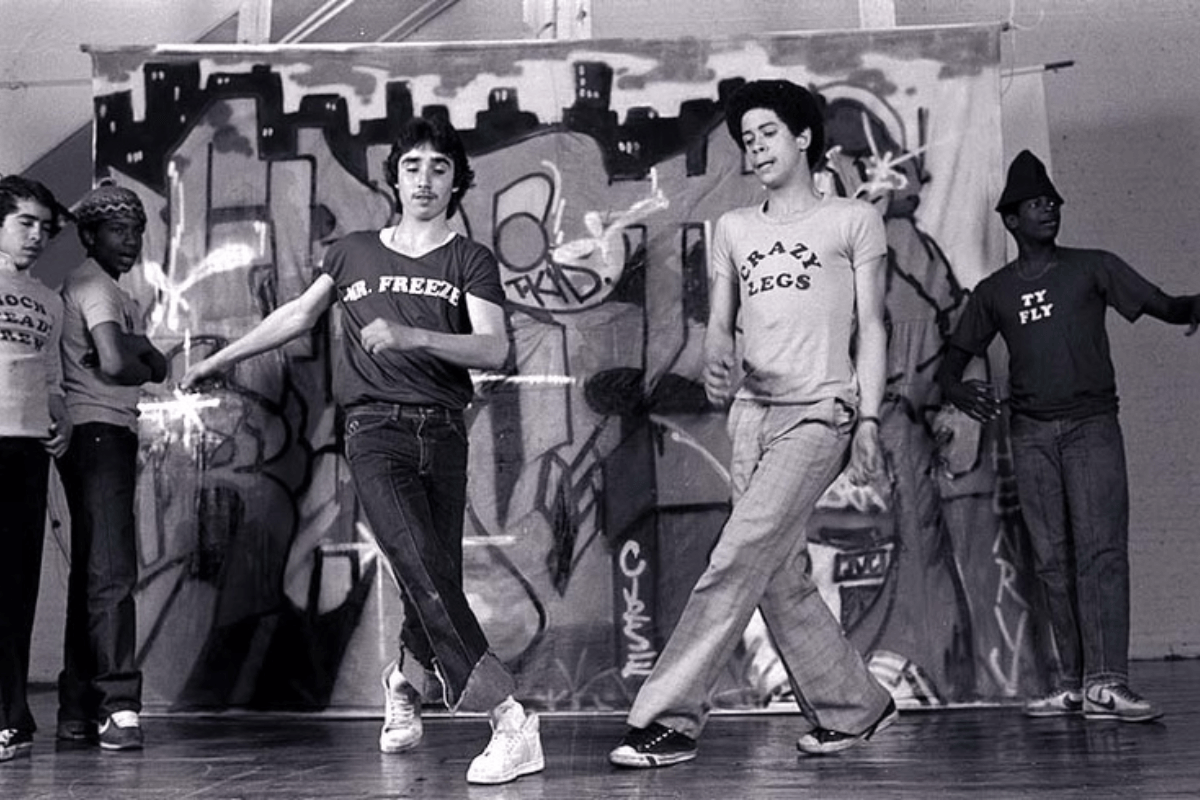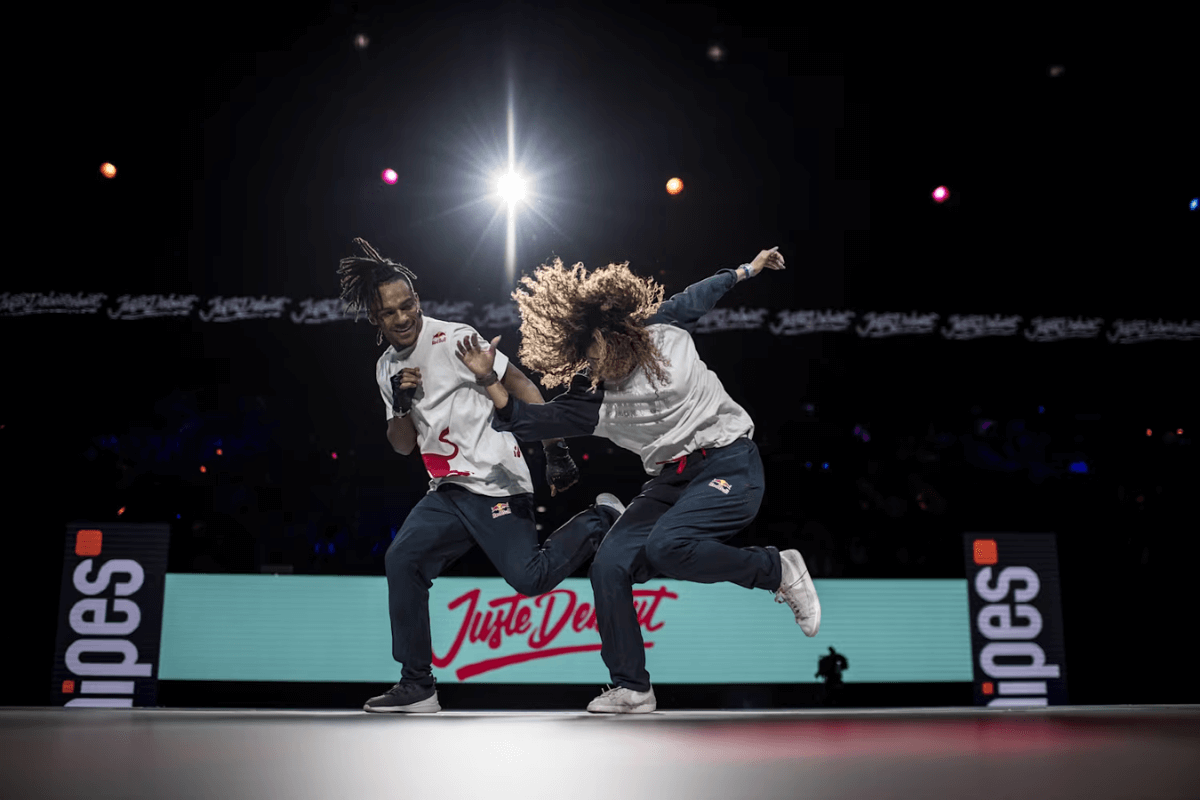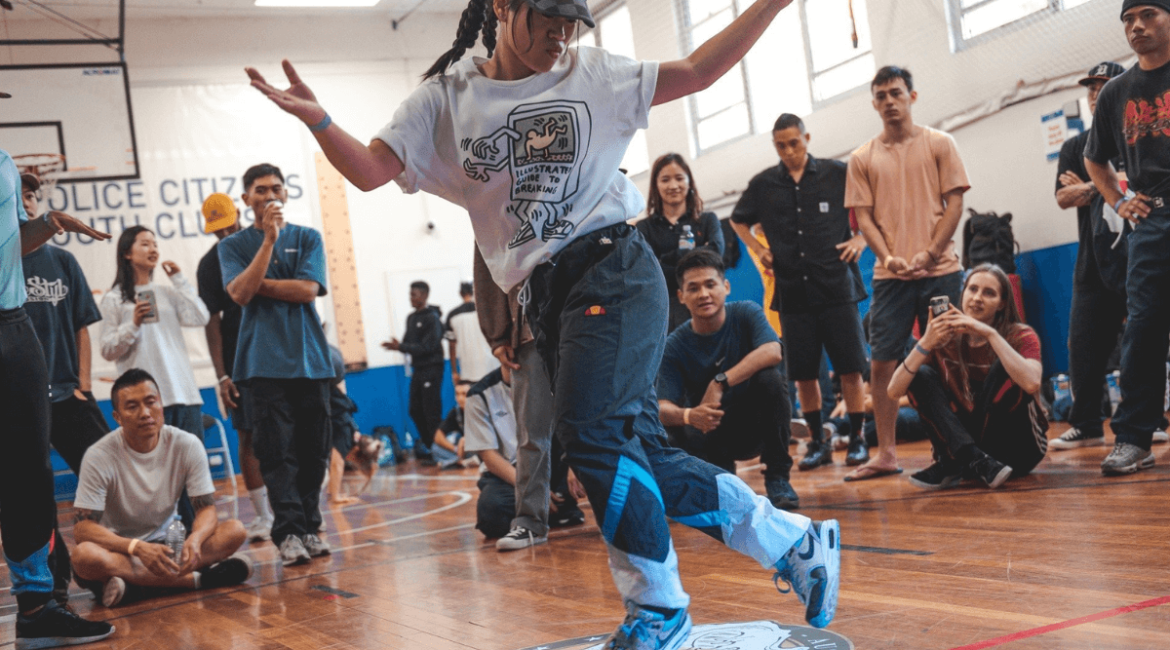Breakdancing, or breaking, is an electrifying and expressive dance form that captivates audiences with its dynamic moves and rhythmic beats. One crucial element of breaking is basic toprock moves, the standing component that sets the stage for the more intricate ground moves.
In this comprehensive guide, we’ll delve into three fundamental toprock moves that every aspiring breakdancer should master. Whether you’re a beginner looking to build a solid foundation or an experienced dancer aiming to refine your technique, these moves will undoubtedly enhance your breaking repertoire.
About toprock
Definition
What is toprock? Toprock, or tops, rocking on top, uprock, is dancing while standing, preceding a drop. Toprock moves are like the first dance steps you do when you’re standing up.
Lots of breakdancers start with these moves before doing other cool stuff. They mix these moves in between different parts of their dance to make it look interesting. So, you see, they dance while standing, then move to the ground, and come back up again. It’s like a dance sandwich with standing, footwork, and floorwork all mixed together.
History of toprock

In the early to mid-1970s, breakdancing had a strong emphasis on dancing while standing, commonly referred to as “on top.” This upright form of dance, also known as “top rockin’,” was a significant aspect of the dance culture during that period.
Popmaster Fabel, a notable figure in the breaking community, notes that some of the earliest moves by b-boy pioneers were performed in an upright position. Over time, this style of dance developed gradually and unintentionally, creating room for growth and new additions until it evolved into a codified form.
The inspiration behind top rockin’ came from various sources, including the influential James Brown, tap dance, and local dances that were popular at the time. The music itself played a crucial role in shaping the top rock style. Pantomimic routines, which involved expressing ideas and emotions through exaggerated movements, were also common elements in early top rock performances.
Mike G, a prominent figure from the mid-1970s breakdancing scene, describes his top rock style during that era, involving straightforward steps forward and backward. This contrasts with the more lateral movements that became characteristic of the Rock Steady Crew’s top rock later on.
As the mid-to-late 1970s approached, the diversity of top rock styles expanded significantly. According to Beaver, a dancer from that period, individuals showcased a variety of top rock styles, each with its unique elements.
Crossing the leg and then returning was a common move, but dancers also incorporated their own creative additions to make their styles stand out. Wizard Wiz further supports the idea that breakers had distinctive top rock steps, emphasizing the individuality present in the dance community.
The breaking scene saw further evolution as more Puerto Ricans became involved in breaking. Their Latin influence and dance heritage added a new layer of vocabulary to top rock, enriching the diversity of moves within the dance form.
By the late 1970s, breakdancers had developed a myriad of steps, introducing moves like the Indian step, Charlie rock, Latin rock, and outlaw into their top rock repertoire. These steps contributed to the ever-expanding vocabulary of top rock, showcasing the dynamic and creative nature of breakdancing during this influential period.
As breakdancing kept changing and people started focusing more on moves on the floor, top rock became simpler and shorter. According to Ken Swift, only about 10% of the dance was about what you did while standing up. It was quick, just something you had to do before getting down.
Alien Ness adds that in the 1980s, a top rock was basically a two-step that lasted maybe three seconds before going down. Even though top rock became shorter, it stuck around, not just because it was tradition but also because it served some important purposes.
In the 1990s, you could see the influence of house, hip hop dance, and other freestyle dances in many dancers’ top rock. In the 2000s and 2010s, Top Rock City by Mr. Wigglez’ and Ynot became really influential. Around the same time, Juste Deboute organized top rock competitions.
Just like the rest of breakdancing, top rock is all about the music. It’s not just about moving your legs; it involves your hands, arms, and the rest of your body Basic foundational top rock includes steps, kicks, spins, and poses. Alien Ness thinks that every part of top rock should have the b-boy approach – the energy and attitude that make breakdancing unique
So, even though top rock changed over time, it’s still an essential part of breaking. It’s not just a warm-up; it’s a way to connect with the music, make your mark on the dance floor, and showcase the energy and attitude that define breakdancing.
3 Basic toprock moves

Indian Step: A Foundation of Movement
The Indian Step is often the first toprock move that breakdancers learn when stepping onto the breaking scene. Its simplicity and effectiveness make it an essential building block for more complex toprock sequences. Let’s break down the Indian Step into its core components.
Footwork
- Starting position: Stand upright with feet shoulder-width apart.
- Initiation: Begin with a small hop, emphasizing a light and controlled lift.
- Movement: Shift your right leg to the left side, maintaining a balanced stance.
- Optional rotation: Turn your right foot slightly to the right for added stability.
- Return to center: Hop back to the central position, repeating the movement on both sides.
Arm Movement
- Central position: Keep your arms straight in front of you, forming a natural and relaxed line.
- Side movement: Open your arms as you shift to the sides, maintaining coordination with your footwork.
- Personalization: Experiment with different arm variations while adhering to the basic form.
Practice Tips
- Start slow: Begin with a slow and deliberate pace, focusing on precision.
- Gradual progression: Increase speed gradually as you gain confidence.
- Relaxation: Ensure your shoulders and neck remain relaxed to avoid a stiff, robotic appearance.
Salsa Step: Adding Flair to Your Toprock
The Salsa Step introduces a dynamic twist to your toprock repertoire, incorporating a rhythmic sway reminiscent of salsa dancing. This move not only diversifies your dance vocabulary but also adds an element of style to your breaking routine.
Footwork
- Initiation: Commence with a hop, moving your right leg to the right side.
- Rhythmic movement: Shift your weight from side to side, incorporating a fluid motion.
- Leg forms: Experiment with bending one leg more than the other for added flair and dynamism.
- Kicks: Introduce a slight kick when transitioning to each side, elevating the move’s visual appeal.
Arm Movement
- Central position: Arms are straight in front of you, mirroring the central position of the Indian Step.
- Side movement: Open your arms as you sway to each side, synchronizing with your footwork.
- Freeform Flair: Allow your arms to move spontaneously, adopting a running-like motion for a loose feel.
Practice Tips
- Leg styling: Focus on incorporating stylish leg movements to enhance the visual impact.
- Kick integration: Seamlessly integrate kicks into the movement for added creativity.
- Fluid transitions: Aim for smooth transitions between sides to maintain the salsa-inspired rhythm.
Cross Over: The Challenge of Coordination
As we progress in complexity, the Cross Over introduces breakdancers to a more intricate toprock move. This challenging step demands coordination and agility, making it a valuable addition to your repertoire.
Footwork
- Kick and switch: Initiate with a kick of your right leg, leaning it on the floor, and swiftly switch legs.
- Airborne transition: Lift your left leg as it turns towards the right side, incorporating a mid-air jump.
- Repeat: Jump, lift the right leg, and switch, creating a continuous flow of movement.
Arm movement
Be loose with your arms and use them kinda like you’re running. They should move very spontaneously and make you feel comfortable in a natural way.
Practice Tips
- Slow initial practice: Begin at a slow pace to grasp the coordination and balance required.
- Gradual speed increase: As confidence builds, gradually increase speed while maintaining control.
- Fluid arm motion: Ensure that arm movements remain spontaneous and running-like for a cohesive look.
Summary
The Indian Step, Salsa Step, and Cross Over serve as foundational toprock moves, they represent just a glimpse into the vast world of breaking. Once you’ve mastered these basics, explore intermediate toprock moves to further elevate your breaking game.
As you practice and integrate these moves into your dance routine, remember that breaking is not only about mastering specific steps but also about expressing your individual style and creativity. Embrace the learning process, celebrate your progress, and, most importantly, have fun on the dance floor!
Stay tuned for more breaking tutorials and dance insights. And if you need a more detailed tutorial, check out this YOUTUBE link below!


Leave a reply